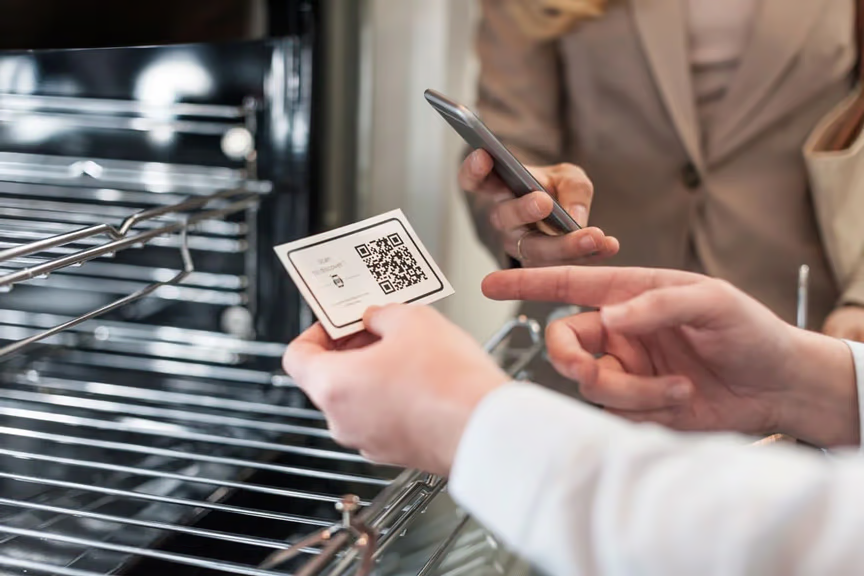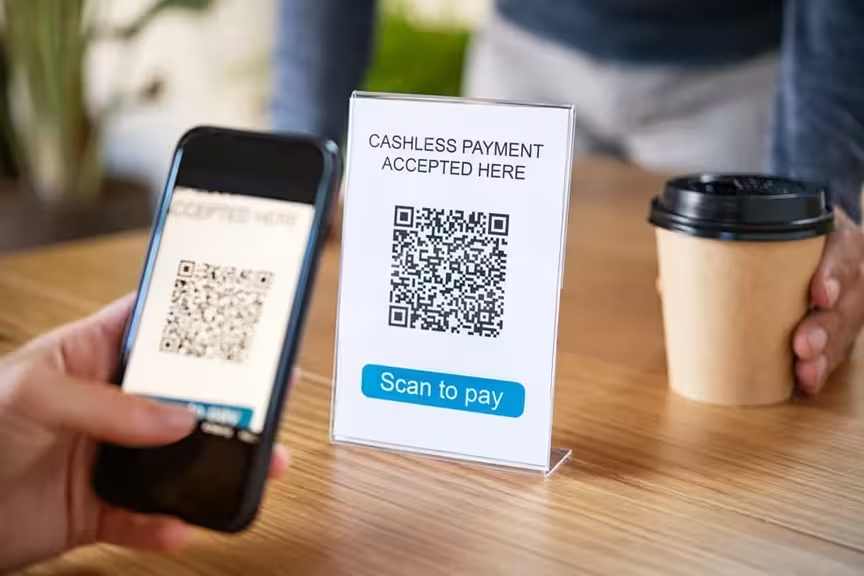
QR codes in marketing have exploded with a 323% increase in scans during 2023, delivering an average 37% click-through rate that beats most digital advertising. Smart brands are using them to bridge physical and digital experiences in powerful new ways.
Marketing used to be about shouting your message and hoping someone listened. Not anymore. Today's customers want instant access, personalized experiences, and seamless connections between what they see and what they can do about it.
Enter QR codes. These simple squares have quietly become one of the most powerful tools in modern marketing. While you were scrolling social media, brands like Starbucks, McDonald's, and Coca-Cola were using QR codes to create marketing campaigns that actually work.
Quick Answer: Why QR Codes Work in Marketing
QR codes work because they eliminate friction. Instead of making customers type, search, or remember something, you give them instant access with a simple scan. This leads to higher engagement and better results than traditional marketing methods.
- Why QR code marketing campaigns get 37% higher engagement rates
- 8 creative ways top brands use QR codes (with real examples and results)
- How to create marketing campaigns that actually convert
- Step-by-step guide to measuring your QR code campaign success
- Common mistakes that kill QR code campaigns (and how to avoid them)
- Future trends that will change QR marketing forever
Ready to Create Your QR Code?
Join thousands of users who trust our platform for their QR Code needs. Start generating professional QR-Codes in seconds!
What Makes QR Codes Perfect for Marketing?
QR codes solve marketing's biggest problem: the gap between seeing something and acting on it. Think about it. You see a cool product in a magazine ad, but by the time you get home, you've forgotten about it. QR codes fix this by letting people act immediately.
Here's what makes them so powerful for marketers:
Instant action. No typing long website addresses or searching for your brand later. Scan and go.
Bridge offline and online. Turn your physical marketing materials into digital experiences. A poster becomes a gateway to your entire online world.
Trackable results. Unlike traditional print ads, you can see exactly how many people engaged, when they scanned, and what they did next.
Mobile-first. With 4.48 billion smartphone users globally, QR codes meet customers where they already are.
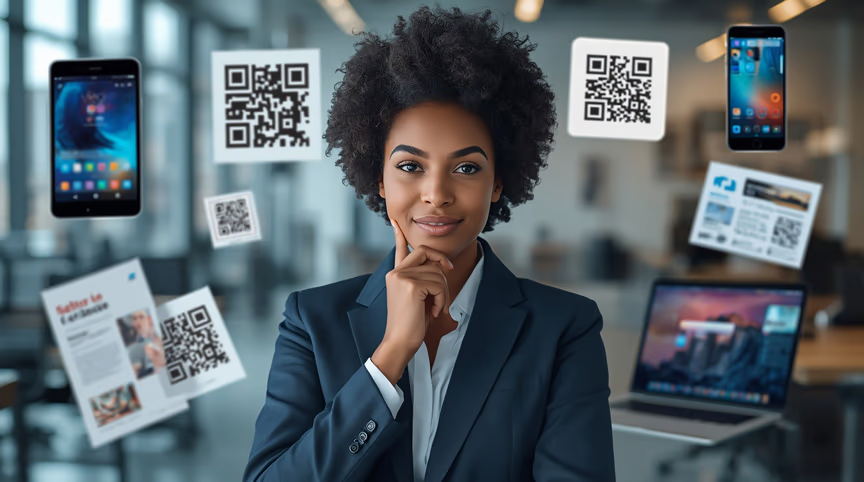
The Numbers Don't Lie: QR Marketing Statistics That Matter
Let's talk real numbers. Marketing with QR codes isn't just trendy, it's effective:
323% increase in QR code scans for marketing campaigns in 2023. That's not growth, that's an explosion.
37% average click-through rate for QR-initiated marketing journeys. Compare that to email marketing's 2-3% average.
69% of marketers update their QR code destinations monthly, showing this isn't set-and-forget marketing.
45% of brands now integrate QR codes into their marketing campaigns to connect offline and online experiences.
59% of consumers scan QR codes daily, making them a reliable way to reach your audience.
The QR code market is projected to hit $3.1 billion by the end of 2024. That's serious money flowing into something that works.
8 Creative Ways Top Brands Use QR Codes in Marketing
1. Loyalty Programs That Actually Build Loyalty
Starbucks didn't just add QR codes to their loyalty program, they made it the centerpiece. With a 31.81% market share in Q4 2024, they're clearly doing something right. QR codes throughout their stores make it dead simple for customers to join, earn points, and redeem rewards. The result? Starbucks Rewards members spend 2-3 times more than regular customers.
2. Interactive Product Packaging
KitKat partnered with Candy Crush to turn their chocolate bars into gaming experiences. Scan the QR code on the package, and you're playing games, earning rewards, and staying engaged with the brand long after you've eaten the chocolate. This type of gamification keeps customers coming back.
3. Instant Access to Product Information
L'Oréal puts QR codes on print ads in magazines like Allure. Scan the code, and you're instantly on a mobile-optimized page with product details, beauty tips, and purchase options. The results speak for themselves: 7% conversion rate and 80% increase in app downloads.
4. Event and Contest Engagement
Zomato ran a restaurant awards campaign where participating restaurants placed QR codes on tables for customers to vote. The campaign generated 1.13 million votes from 140 cities across India. That's the power of making participation effortless.
5. Creative Outdoor Advertising
Miller Lite created wearable QR code jerseys for football fans. Instead of a traditional TV commercial, they had 1,000 fans wear QR codes during "beer runs" at the game. Other fans could scan the codes to enter contests and win prizes. Interactive advertising at its finest.
6. Social Media Integration
Chaayos cafe in Delhi turned their wall into graffiti art with a QR code that linked to their Spotify playlist. The call to action? "Scan to listen to Chaayos Relax playlist." Simple, creative, and it encouraged customers to stay longer.
7. Exclusive Content and Offers
McDonald's places QR codes on food packaging that link to nutritional information, but they've also used them for anime content, exclusive deals, and promotional games. In their UK campaign, 75% of loyalty program members participated by scanning QR codes on drink cups.
8. Augmented Reality Experiences
Coca-Cola partnered with creative technologists to create custom QR codes in movie theaters, theme parks, and stadiums. Scanning them unlocked exclusive music videos and AR experiences tied to their Coke Studio campaign featuring artists like Karol G and NewJeans.
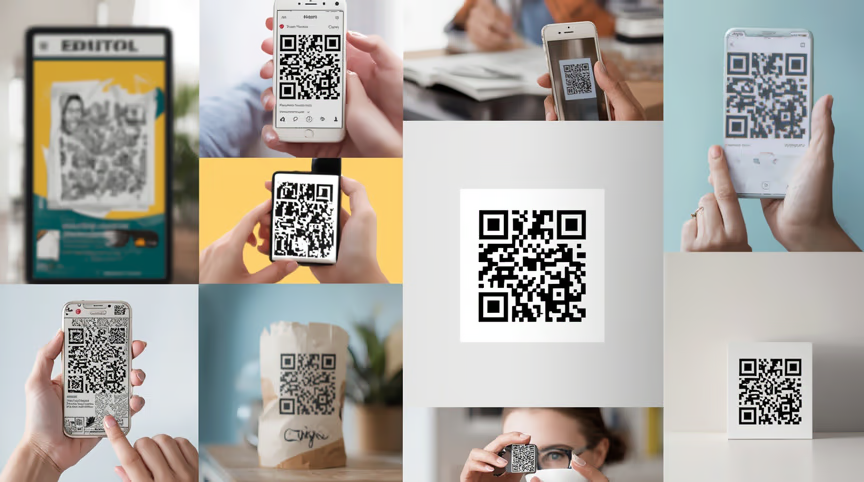
How to Create QR Code Marketing Campaigns That Convert
Step 1: Define Your Goal
Don't just slap a QR code on something and hope for the best. What do you want to achieve? Drive app downloads? Collect email addresses? Increase sales? Your goal determines everything else about your campaign.
Step 2: Choose the Right QR Code Type
Use dynamic QR codes for marketing campaigns. Unlike static codes, you can update where they point without reprinting anything. This flexibility is crucial for testing and optimization.
Step 3: Design for Scannability
Your QR code needs to be large enough to scan easily. Minimum 2cm x 2cm on print materials. Add your logo if you want, but test that it still scans properly on different devices.
Step 4: Create a Clear Call to Action
"Scan me" is boring. Try "Scan for 20% off" or "Scan to see behind the scenes" or "Scan to join the playlist." Tell people what they'll get for their effort.
Step 5: Optimize the Landing Experience
Where you send people matters more than the QR code itself. Make sure your landing page loads fast on mobile, delivers on your promise, and makes the next step obvious.
Step 6: Test Everything
Test your QR codes on different devices before launching. iPhone cameras work differently than Android cameras. What looks perfect on your phone might not scan on others.
Measuring QR Code Marketing Success
One of the biggest advantages of QR codes in marketing is that you can track everything. Here are the key metrics to watch:
Scan Rate: How many people who see your QR code actually scan it. Industry average is around 15%, but well-designed campaigns see 25-30%.
Click-Through Rate: Percentage of scans that result in the desired action (purchase, sign-up, etc.). QR campaigns average 37%, much higher than most digital channels.
Time and Location Data: When and where people scan tells you about their behavior and helps optimize placement.
Device Information: Knowing if your audience uses iOS or Android helps optimize the experience.
Return Rate: How many people scan your QR codes multiple times shows ongoing engagement.
Use a QR Code Generator with analytics built-in to track these metrics automatically.
Common QR Code Marketing Mistakes (And How to Avoid Them)
Mistake 1: Using QR codes without clear value.
Don't make people scan just to visit your homepage. Give them something specific and valuable.
Mistake 2: Making QR codes too small.
If people have to squint to scan it, they won't. Make it at least 2cm x 2cm on print materials.
Mistake 3: Not testing on different devices.
What scans perfectly on your iPhone might not work on Android. Test everything.
Mistake 4: Sending people to non-mobile pages.
Most scans happen on phones. If your landing page isn't mobile-optimized, you've wasted their time.
Mistake 5: Using static QR codes.
Dynamic codes let you update, test, and track. Static codes are dead ends.
Mistake 6: Poor placement.
QR codes on moving vehicles or high up on billboards don't work. Put them where people can comfortably scan.
QR Code Marketing Best Practices
Make it worth their time. Exclusive discounts, behind-the-scenes content, or useful information work better than generic links.
Keep it simple. One QR code, one clear action. Don't overwhelm people with choices.
Brand your codes. Add your logo and use your brand colors to build trust and recognition.
Provide alternatives. Not everyone can or will scan QR codes. Include a short URL or other way to access the content.
Update regularly. Use dynamic QR codes to test different offers, content, or landing pages without reprinting materials.
Train your team. Make sure your staff knows what the QR codes do and can help customers who have trouble scanning.
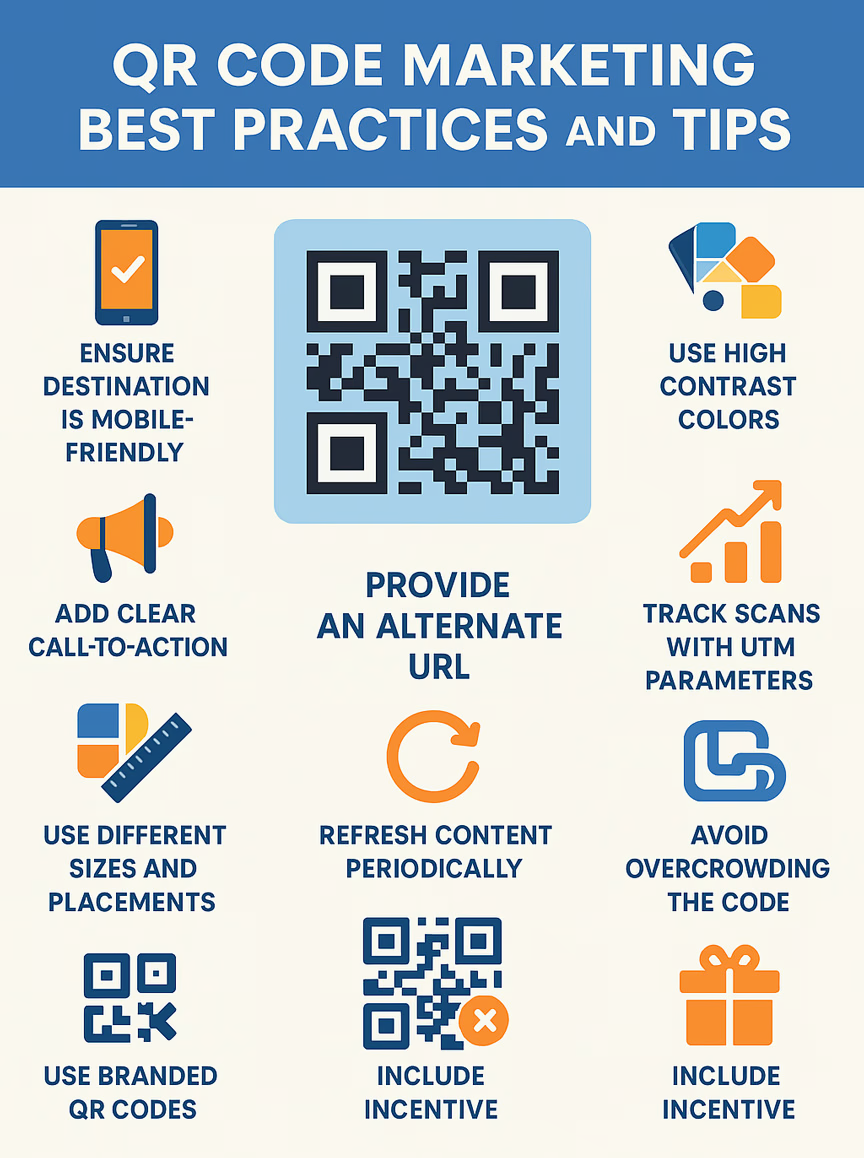
Industry-Specific QR Code Marketing Strategies
Restaurants and Food Service
Beyond digital menus, use QR codes for loyalty programs, nutritional information, chef specials, or customer feedback. 78% of customers prefer QR menus, so you're meeting existing demand.
Retail and E-commerce
Product information, size guides, customer reviews, or direct purchase links. Amazon uses QR codes for everything from inventory tracking to customer reviews.
Real Estate
Property details, virtual tours, agent contact info, or mortgage calculators. 35% of real estate agents used QR codes in 2022, expected to hit 50% by 2025.
Events and Entertainment
Ticket purchases, event schedules, exclusive content, or social media links. The convenience factor is huge for events.
Healthcare
Appointment scheduling, patient forms, health information, or telehealth links. Especially valuable for contactless check-ins.
Future of QR Codes in Marketing
QR code marketing is evolving fast. Here's what's coming:
AI-Powered Personalization: QR codes that show different content based on who scans them, using AI to deliver personalized experiences.
Augmented Reality Integration: More brands will use QR codes to trigger AR experiences, making marketing more immersive.
Voice Integration: QR codes that connect to voice assistants or audio content for hands-free experiences.
Blockchain Integration: QR codes linked to blockchain for product authenticity, supply chain transparency, and digital ownership.
Advanced Analytics: Better tracking of customer journeys from QR scan to purchase, providing deeper insights for marketers.
The QR code market is expected to grow 22% by 2025, so this technology isn't going anywhere.
Frequently Asked Questions
Do QR codes actually work for marketing?
Yes. QR code marketing campaigns average 37% click-through rates, much higher than email marketing (2-3%) or display ads (0.5-1%). The key is providing clear value for scanning.
How much does QR code marketing cost?
Basic QR code creation is free. Advanced features like analytics, custom designs, and dynamic codes typically cost $10-50 per month depending on usage.
What's the best placement for marketing QR codes?
Eye level, well-lit areas where people can stand still to scan. Product packaging, table tents, posters at bus stops, and print ads work well. Avoid moving vehicles or high billboards.
Should I use static or dynamic QR codes for marketing?
Always use dynamic QR codes for marketing. They allow you to update destinations, track analytics, and A/B test without reprinting materials.
How do I track ROI from QR code campaigns?
Use QR codes with built-in analytics to track scans, conversions, and customer behavior. Compare campaign costs to revenue generated from QR-driven actions.
Can QR codes work for small businesses?
Absolutely. Small businesses created 38% of all QR codes in 2023 because they're affordable and effective. They level the playing field with larger competitors.
What size should marketing QR codes be?
Minimum 2cm x 2cm (about 0.8 inches) for print materials. For billboards or distant viewing, make them much larger. Test scanability from the expected viewing distance.
Bottom Line
QR codes in marketing aren't just trendy, they're transformational. With 323% growth in marketing scans and 37% average click-through rates, they deliver results that most marketing channels can't match.
The brands winning with QR codes understand they're not just about the technology, they're about removing friction and creating instant connections with customers. Whether it's Starbucks building loyalty, L'Oréal driving app downloads, or McDonald's boosting engagement, successful QR marketing campaigns share one thing: they make customers' lives easier.
The future of marketing is about meeting customers where they are, when they want to engage, with the least possible friction. QR codes do exactly that.
Ready to start your own QR code marketing campaign? Use our QR Code Generator to create professional, trackable QR codes that turn your marketing materials into powerful engagement tools.
Thomas Alling
Thomas is a digital marketing expert and CEO of Mementor with over 25 years of experience in web design, programming, and digital marketing. He specializes in helping businesses implement QR code strategies that bridge physical and digital experiences across multiple industries.
View all posts by Thomas Alling
